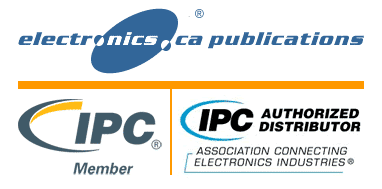ELECTRONICS.CA PUBLICATIONS announces the availability of a comprehensive global report on Battery Chargers markets. Global market for Battery Chargers is projected to reach US$16 billion by 2020, driven by the growing demand for battery-powered electronic devices and equipment.
As an indispensable accessory for all types of electronic devices and equipment, battery chargers are expected to witness steady demand in line with the trends in the electronics industry. Rising energy storage needs of a wide range of electronic devices used in major end-use markets including automotive, industrial, information technology, telecommunications, and consumer electronics is driving growth in the battery chargers market. Telecommunications represents the largest end-use market for battery chargers. Explosive growth in digital technology and the need to share and acquire information swiftly is boosting demand for compact, computing devices, thereby spurring demand for battery chargers. Increasing sales of smartphones, tablets, laptops, and notebooks which require batteries to function smoothly is expected to boost growth in the market.
The emergence of new classes of batteries with different materials is giving rise to increased demand for sophisticated charging mechanisms, to improve charging speed and ensure safety. With technology advancements infusing a broader range of functional characteristics into smaller and lighter formats, battery chargers market is witnessing continuous flow of new designs with efficient charge circuitry and safe charging techniques that prevent overvoltage, and protect battery and system during charging. Advanced products such as smart chargers and wireless chargers are expected to witness rapid growth driven by the growing mobility needs of modern-day consumers. Growing environmental awareness and voluntary stewardship is helping spur demand for green battery chargers powered by wind and solar energy.
As stated by the new market research report on the United States represents the largest market worldwide. Asia-Pacific ranks as the fastest growing market with a CAGR of 7.5% over the analysis period. Rising standards of living, huge population base, and adoption of mobile phones and electric vehicles represent key growth drivers in the region. In addition to India and China, demand for battery chargers in the region is high in countries such as Australia, Singapore, the Philippines, Malaysia, and Thailand, among others.
Major players covered in the report include Accutronics Limited, Analytic Systems Ware Ltd., Anoma Corp., Best Wisdom Electronics Co. Ltd., Energizer Holdings Inc., Exide Technologies, Ferro Magnetics Corporation, Flextronics, FRIWO AG, HindlePower Inc., Minwa Electronics Co. Ltd., Motor Appliance Corporation, Panasonic Corporation of North America, Phihong USA Corporation, Powerbase Industrial (HK) Ltd., Saft S.A., Salcomp Plc, Schumacher Electric Corporation, Scud (Fujian) Electronics Co. Ltd., Uniross Batteries S.A.S, and Yuasa Battery Inc.
The research report titled “Battery Chargers – Global Strategic Business Report” provides a comprehensive review of market trends, issues, drivers, mergers, acquisitions and other strategic industry activities of major companies worldwide. The report provides market estimates and projections for all major geographic markets including the US, Canada, Japan, Europe (France, Germany, Italy, UK, Spain, Russia, and Rest of Europe), Asia-Pacific (China, India, and Rest of Asia-Pacific), Latin America (Brazil and Rest of Latin America) and Rest of World. End-use sectors analyzed include Automotive, Industrial, Information Technology, Telecommunications and Consumer Products.
 Details of the new report, table of contents and ordering information can be found on Electronics.ca Publications’ web site. View the report: Battery Chargers – Global Strategic Business Report.
Details of the new report, table of contents and ordering information can be found on Electronics.ca Publications’ web site. View the report: Battery Chargers – Global Strategic Business Report.
Global Battery Chargers Market Report







